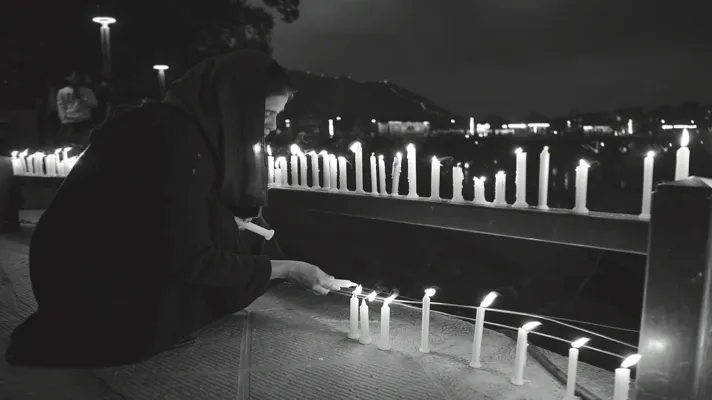The snow-fed meadows of Pahalgam with running streams are known more for postcard serenity than for bloodshed. But on April 22nd, they became the site of a massacre, innocent killings. Armed terrorists opened fire on scattered tourists who were on holiday, enjoying the meadows, surrounded by lofty pine trees in the mountains, holding the sky, killing 26, including a Nepalese citizen and a local, in a coordinated, selective killing.
According to survivors, the assailants demanded religious identification before executing the victims. The attack bears the hallmarks of Pakistan-based banned terrorist groups, Lashkar-e-Taiba (LeT) being the immediate accused.India’s response was swift.

Prime Minister Narendra Modi, midway through a diplomatic visit to Riyadh, cancelled the trip and returned to New Delhi, where he chaired an emergency security meeting within minutes of landing. Home Minister Amit Shah reached Srinagar and Pahalgam at ground zero for a firsthand situation analysis. A flurry of retaliatory actions followed.
New Delhi’s five-pronged retaliation included suspension of the Indus Waters Treaty, the expulsion of Pakistani military attachés and withdrawal of diplomatic staff, and the closure of the Attari–Wagah border crossing. Pakistan reacted by closing the airspace for Indian flights. Unlike prior provocations that elicited diplomatic protests or covert reprisals, this time India has opted for overt statecraft.
The optics matter. The victims were not soldiers, but Hindu civilians, tourists, a brutal targeting that weaponizes faith to inflame domestic pressure. In an already charged atmosphere, the ruling BJP faces intense demands to demonstrate strength.
India has suffered many such atrocities over the years. To name a few, the Chattisinghpora massacre in 2000, the J&K State legislative assembly attack in 2001, the Parliament attack in 2001, the 2008 Mumbai carnage, the 2016 Uri attack, and the 2019 Pulwama bombing. What has changed is the pattern of Indian response.
From strategic restraint to calibrated retaliation, the shift has been gradual but firm, especially under Prime Minister Modi’s leadership. Where previous governments might have relied solely on international condemnation, the BJP-led government has increasingly embraced a doctrine of visible reprisal.In September 2016, after militants attacked an army base in Uri, killing 19 Indian soldiers, India conducted “surgical strikes” across the Line of Control (LoC) in Pakistan occupied Kashmir.
Special forces destroyed several terrorist launchpads in a cross-border raid. Then, in February 2019, a suicide bomber from Jaish-e-Mohammed killed 40 paramilitary personnel in Pulwama travelling in a bus. Within 12 days, India launched an airstrike on a training camp in Balakot, deep inside Pakistani territory, the first such air operation since the 1971 war.
Pakistan retaliated with an air raid of its own, triggering a dogfight in which an Indian fighter pilot was captured. Yet despite the high tensions and tickling warlike situation, both sides eventually stepped back from the brink. It was a dangerous dance of deterrence: demonstrating strength without tumbling into open war.
The current attack is more chilling and shocking because of its civilian and sectarian nature. Every Kashmiri, like any citizen of the country, condemned it and called it brutal, demanding justice. Unlike Uri and Pulwama, which targeted soldiers, this was aimed at unarmed holidaying tourists who were enjoying the fresh air, jostling with the locals, sharing bread, taking rides, talking with the mesmerising snow-capped peaks of the valley with their families and loved ones.
The brutality evokes memories of the 2002 Kaluchak massacre, in which families of Indian soldiers and civilians were killed by gun-wielding terrorists in Jammu. It also reflects a shift in terrorist tactics, which is more provocative.The Modi government, at a time when the world is already facing economic anxieties, conflicts and political churn, cannot afford to appear passive.
A large part of Modi’s appeal has been his image as a muscular nationalist willing to “teach Pakistan a lesson.” That image would take a hit if the government merely issued condemnations. The political costs of inaction will be high.
Yet war is no easy option. Both countries are nuclear powers, and while nuclear deterrence has prevented full-scale conflict since 1999, it has not eliminated the possibility of conventional skirmishes. The 2019 Balakot exchange came dangerously close to escalation, prompting Western capitals to urge restraint.
But the global environment has shifted since then.In 1999, during the Kargil war, it was American pressure, particularly from President Bill Clinton, that forced Pakistan’s Nawaz Sharif and General Pervez Musharraf to back down. Today, Washington is less inclined to mediate.
With its strategic focus on countering China, the United States and Europe have drawn closer to India, investing in defence, tech, and intelligence-sharing partnerships. In private, American political analysts and officials still worry about India-Pakistan tensions flaring into a wider war. But in public, their messaging is measured.
They understand that developing India has no appetite for policing or listening to the dictates of other countries, as India is finding its own engines and way of growth and building global relationships where India is considered one of the main constituents in bringing world peace and development. India is no longer hyphenated with Pakistan. India makes its own decisions, such as unilaterally withdrawing from the Indus Water Treaty.
Pakistan, on the contrary, is internally weak at both the political and international fronts. The country remains mired in economic crisis, with double-digit inflation, IMF supervision, and frequent political tremors, with a growing image of hosting radical terrorist groups further dipping the image of Pakistan. In the absence of political will, the army in Pakistan continues to play a role and has a big role in Pakistan’s India policy, especially when it comes to Kashmir and terrorist proxies.
Over the past two decades, groups like JeM and LeT who keep on changing the names of their groups like Resistance Front etc, have served as Islamabad’s “non-state” pressure valves. Although officially banned, they operate under various aliases, enjoying varying degrees of state tolerance. Pakistan is in disarray, and the military is under scrutiny after months of political turmoil.
Nuclear weapons have prevented full-scale war but failed to prevent conflict altogether. Terrorist attacks, by design, exploit this gap. These attacks are provocations intended to draw responses.
What might a “surprise” Indian response look like?India, for its part, is preparing for both military and non-military responses. Several options must be sought with India’s growing strength in defence and economy. A diplomatic response is already there.
Now reports suggest that drone surveillance has been ramped up along the LoC. The Army Chief has visited LoC and met military officers on the ground. Air force exercises and army mobilisation at strategic striking positions are building up.
Intelligence assessments and their agencies would certainly have identified possible terrorist training sites in Pakistan-occupied Kashmir, as one option, while the Indian Air Force is reportedly on standby, and a limited strike cannot be ruled out. Intelligence inputs reportedly confirm cross-border linkages and known militant training camps, some in Pakistan occupied Kashmir. For Delhi, the case for retaliatory action is not just moral, but tactical too: restore deterrence before militant infrastructure regenerates.
Some also speculate and suggest covert operations against the terrorist group leadership. Economic warfare, like India, may also increase the cost of war, which will massively affect Pakistan, which is already sinking into debt and a financial crisis. Whatever actions may happen, one thing is sure: something big in retaliation is on the cards.
Meanwhile, the international community has responded. The U.S.
, Russia, China, Saudi Arabia, and the United Arab Emirates have all condemned the attack and the deliberate targeting of civilians, some calling for restraint and dialogue. India has briefed important envoys in New Delhi about the situation, perhaps showing confidentially some proof of Pakistan’s involvement. Prime Minister Modi also acknowledged international solidarity, expressing gratitude to foreign leaders and governments who have stood with India during this period.
“Everyone who believes in humanity stands with India.”India’s message to the international community, particularly the West, is that New Delhi will act independently as terror strikes footprints are traced across the border. The Prime Minister categorically said that India will identify, track, and punish every terrorist, their handlers, and their backers, emphasising that India will pursue them to the ends of the earth.
“India’s spirit will never be broken by terrorism, and terrorism will not go unpunished. Every effort will be made to ensure justice is served and the entire nation is firm in this resolve against terrorism.”In the days ahead, Prime Minister Modi will come under heavy pressure.
India’s response will be judged not by how forcefully it strikes back, but by how clearly it shows a long-term strategy, just as it did in past operations like the surgical strikes and Balakot air raids, which avoided civilian harm and focused only on terrorist bases. Can India once again hit back at terrorists and their masters without hurting ordinary people? And can it make its citizens, including those living on the borders, feel safe without dragging the region into another round of violence? Past actions suggest that India is more willing to respond firmly to attacks. But the decision is tricky: doing nothing might seem weak, while a strong move could spark bigger conflict.
Right now, everything needed for war, anger, blame, and threats is already there. The challenge now lies in the leadership and decision-makers to channel public anger into a measured response that upholds national security without tipping the region into deeper instability, but leading to deterrence of any future attacks. Only time will tell.
Author is National Editor, Greater KashmirThe post A Bloody Postcard appeared first on Greater Kashmir..
Politics

A Bloody Postcard

Brutal terrorist attack in Kashmir reignites the fuse of conflict between India and PakistanThe post A Bloody Postcard appeared first on Greater Kashmir.















